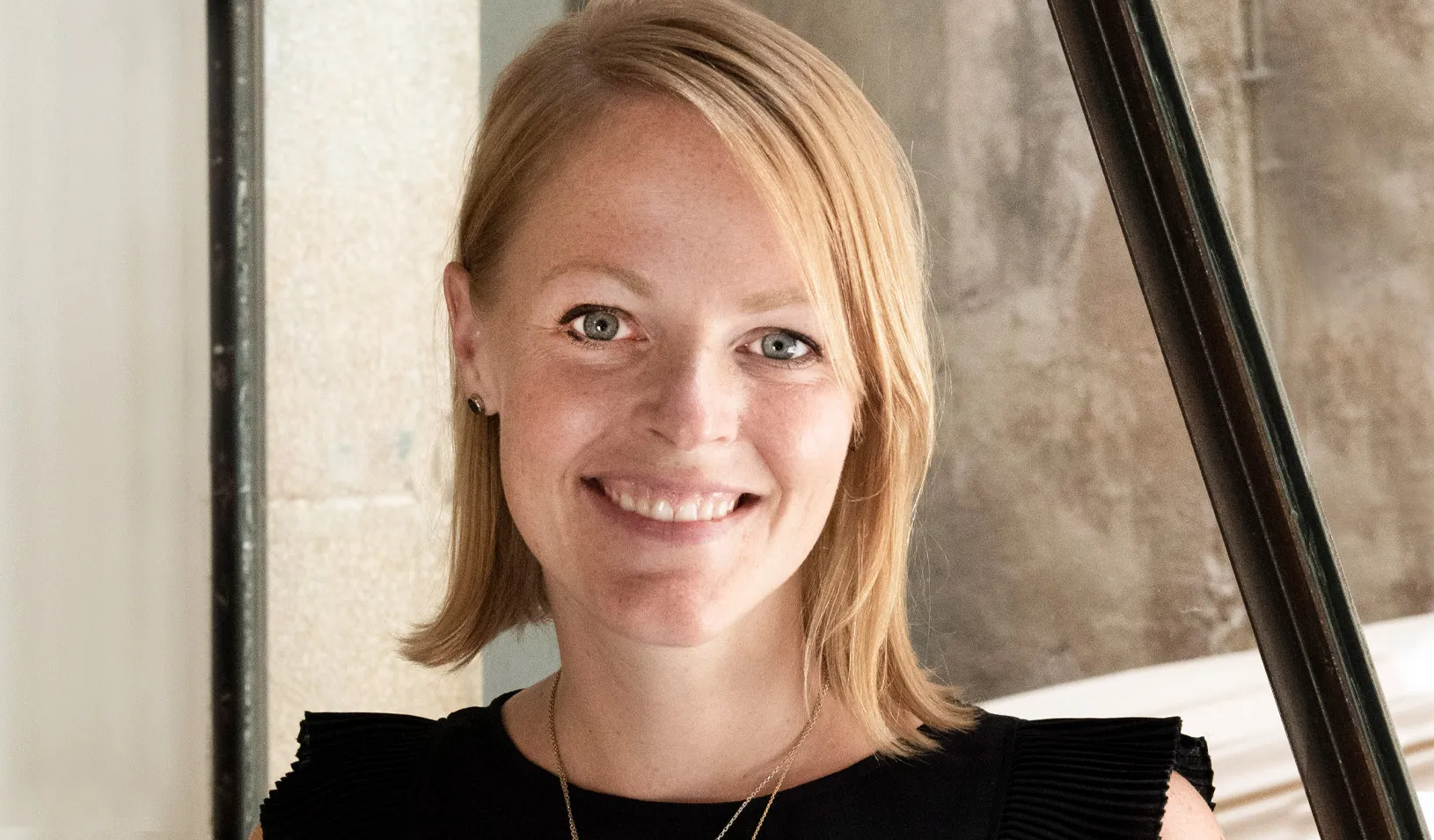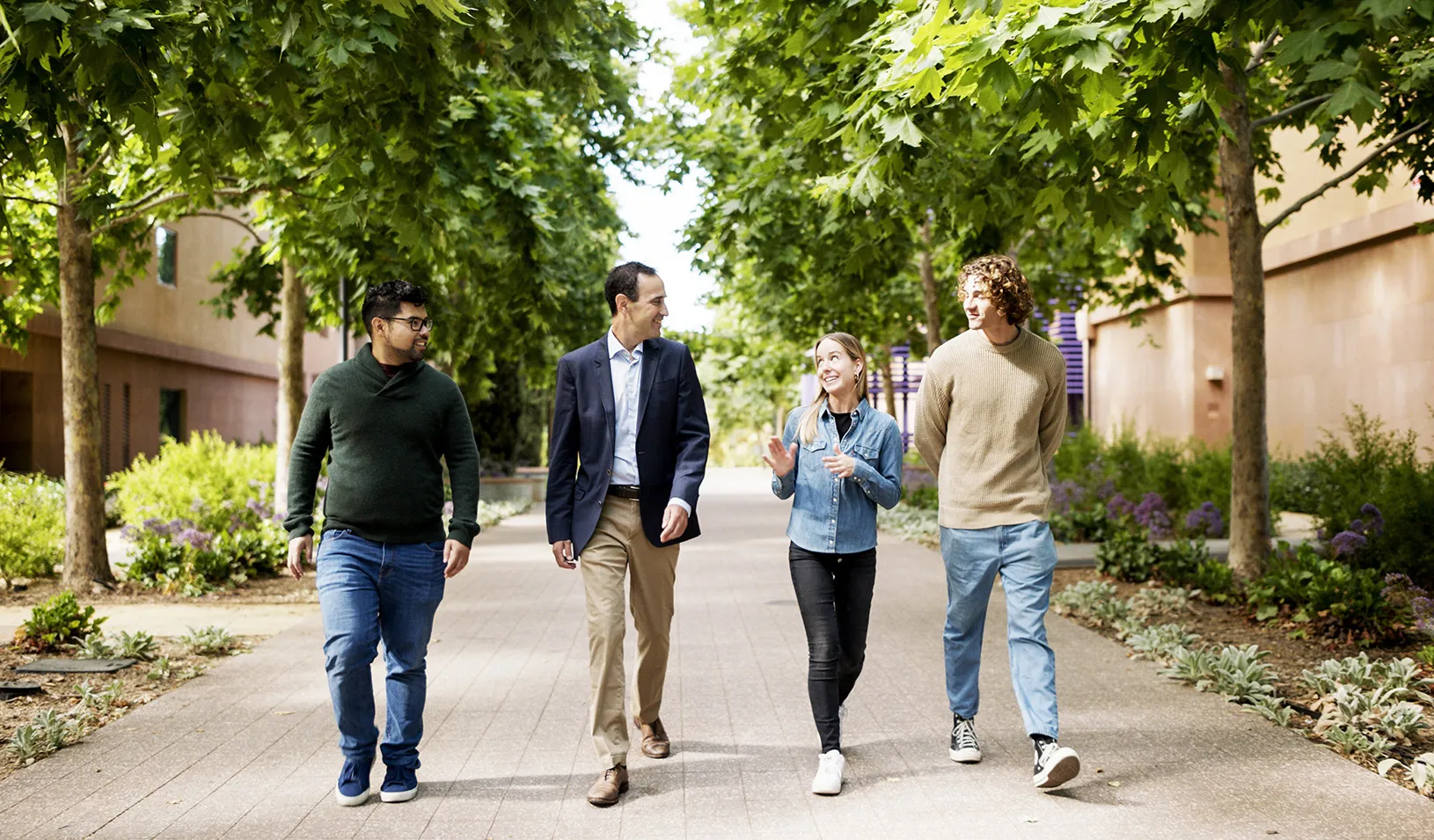Going Green: Environmental Sustainability for the New Business School Campus
Stanford GSB Campus Sustainability Fund is a dedicated fund to support the front-end costs of achieving LEED® Platinum for the new campus. The goal is to raise $15 million.
April 15, 2008
When Stanford GSB set out to build an entirely new campus, its faculty, staff, and students knew they wanted it to be environmentally friendly. True to form, the school decided to reach for the top and follow the advice of its Environmental Sustainability Taskforce to aim for the highest level of environmental certification—the Leadership in Energy Efficiency and Design (LEED®) Platinum level awarded by the U.S. Green Building Council.
Nicole Lederer and husband Larry Orr, MBA ’82, provide for environmental leadership as the first donors to the GSB Campus Sustainability Fund.
Meeting this ambitious goal requires significant investment, and several leaders have stepped up to put their money where their ideals are.
Along with a lead gift of $5 million from C. Angus Wurtele, MBA ’61, and his wife, Margaret von Blon, Stanford GSB Campus Sustainability Fund was initially established by Larry Orr, MBA ’82, and his wife, Nicole Lederer. It is a dedicated fund to support the front-end costs of achieving LEED® Platinum for the new campus. The goal is to raise $15 million, and so far donors have given or pledged about $7 million.
“We are delighted to be among the first supporters of Stanford GSB’s commitment to create a flagship for the economic and environmental principles that will define our future,” say Orr and Lederer.
Jane Woodward, MBA ’87, inspired her company, Mineral Acquisition Partners, to make a gift, and also rallied her classmates to contribute nearly $1.7 million to the Campus Sustainability Fund.
“Our class is continuing a strong tradition of signaling the importance of environmental responsibility in business,” Woodward says. “Just as Stanford GSB taught us to be leaders, we are helping the school set an example in this critical area.”
LEED® promotes a whole-building approach to sustainability by recognizing performance in five key areas of human and environmental health: sustainable site development, water savings, energy efficiency, materials selection, and indoor environmental quality. Additional credit is given for design innovation.
Planners are looking closely at a host of green features. Those include using rainwater or circulated gray water for the building’s sewage system, and choosing materials that emit little or no volatile organic compounds that cause poor indoor air quality. Designers are exploring a system that monitors indoor and outdoor temperatures and lets people know when it is acceptable to open the windows, helping to reduce air conditioning.
The Knight Management Center will demonstrate how smart building design can dramatically reduce environmental impacts and decrease lifetime cost. This effort represents a tremendous opportunity for the school to promote environmental leadership by demonstrating its environmental commitment to academia, business, and the world.
For media inquiries, visit the Newsroom.
Explore More
Erin Nixon Joins Stanford GSB as Assistant Dean of Admissions

Nia Rose Froome, MBA ’23: Making Local, Fresh Food Available for All

New Research Fund Promotes Responsible Leadership for the Next Century
